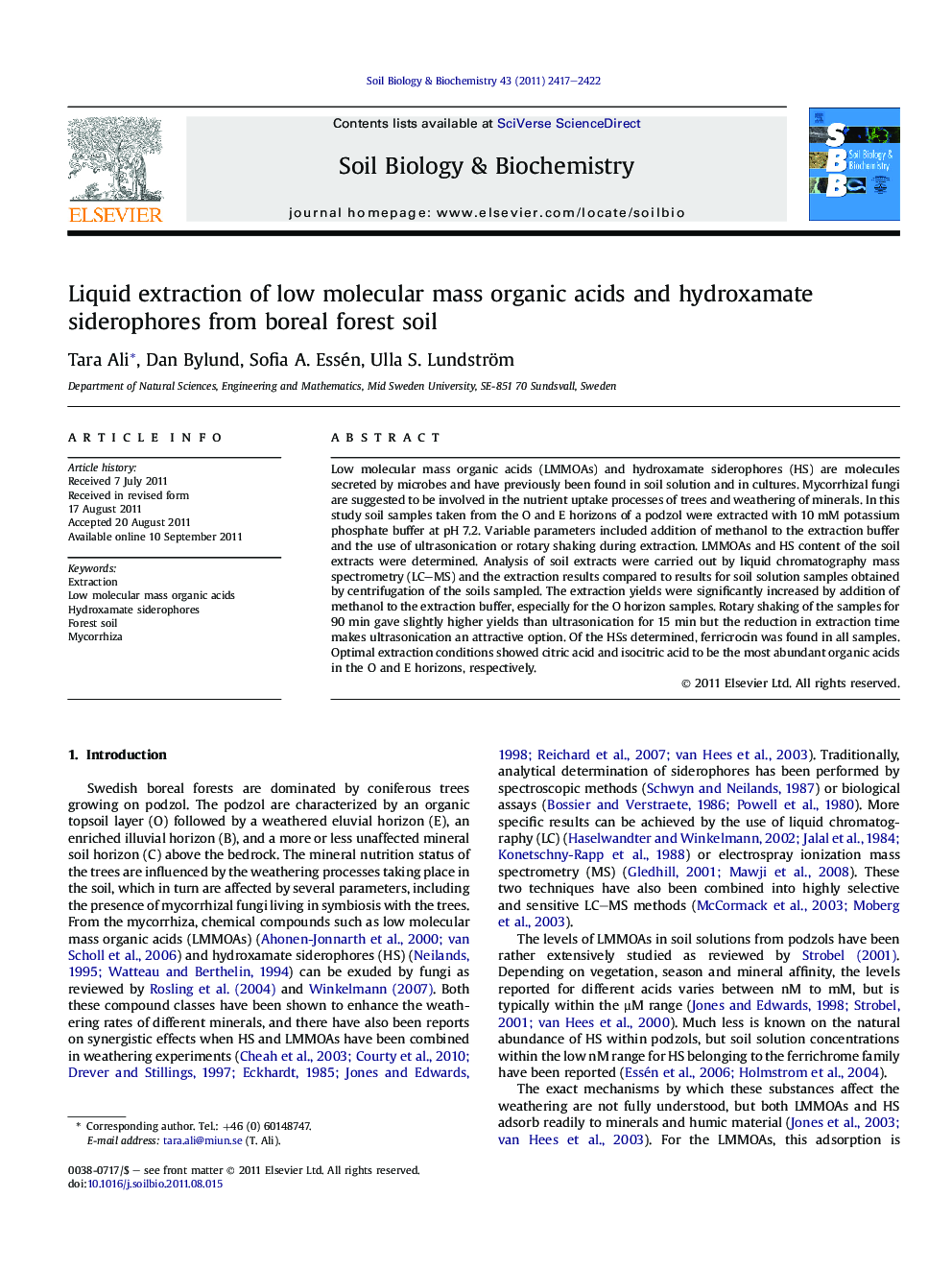| Article ID | Journal | Published Year | Pages | File Type |
|---|---|---|---|---|
| 2025164 | Soil Biology and Biochemistry | 2011 | 6 Pages |
Low molecular mass organic acids (LMMOAs) and hydroxamate siderophores (HS) are molecules secreted by microbes and have previously been found in soil solution and in cultures. Mycorrhizal fungi are suggested to be involved in the nutrient uptake processes of trees and weathering of minerals. In this study soil samples taken from the O and E horizons of a podzol were extracted with 10 mM potassium phosphate buffer at pH 7.2. Variable parameters included addition of methanol to the extraction buffer and the use of ultrasonication or rotary shaking during extraction. LMMOAs and HS content of the soil extracts were determined. Analysis of soil extracts were carried out by liquid chromatography mass spectrometry (LC–MS) and the extraction results compared to results for soil solution samples obtained by centrifugation of the soils sampled. The extraction yields were significantly increased by addition of methanol to the extraction buffer, especially for the O horizon samples. Rotary shaking of the samples for 90 min gave slightly higher yields than ultrasonication for 15 min but the reduction in extraction time makes ultrasonication an attractive option. Of the HSs determined, ferricrocin was found in all samples. Optimal extraction conditions showed citric acid and isocitric acid to be the most abundant organic acids in the O and E horizons, respectively.
Graphical abstractFigure optionsDownload full-size imageDownload as PowerPoint slideHighlights► We describe the extraction of potential weathering agents in a podzol soil profile. ► Extraction yields were increased by addition of methanol to the extraction buffer. ► Citric and isocitric acid were abundant LMMOAs in O and E horizons, respectively. ► The hydroxamate siderophore ferricrocin was detected in all soil samples analyzed.
